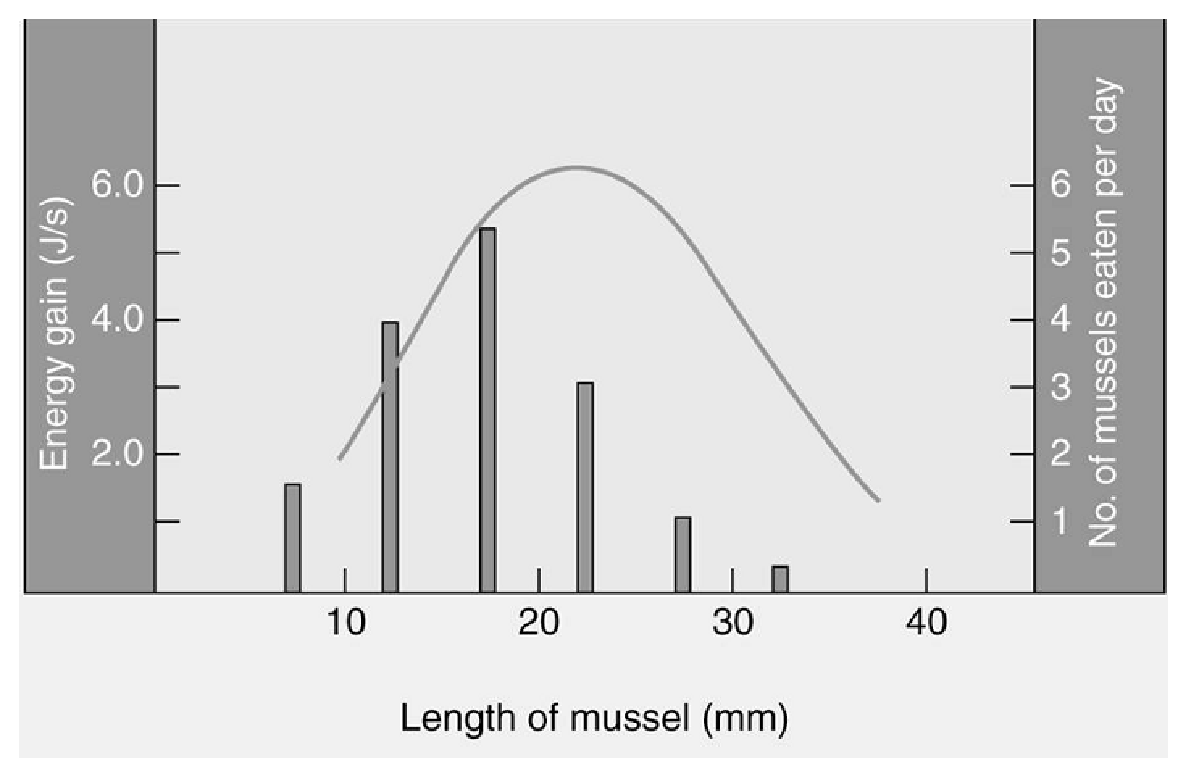What percent of its total genome does bee A donate to its offspring?
a. 50 percent
b. 75 percent
c. 0 percent
d. 100 percent
e. 25 percent
D
You might also like to view...
Which of the following is the best interpretation of the graph below of mussel size (x-axis) versus energy gain (line graph, left y-axis), and number of mussels eaten per day (histogram, right y-axis)?

A. Mussels are selected as food sources by crabs.
B. Crabs select mussels in a way that maximizes their energy gain.
C. Mussel size does not seem to be a good predictor as to which mussel hungry crabs will select.
D. Crabs tend to consume most of the largest mussels.
E. Crabs prefer the mussels with the smallest length for their food resources.
Clarify question:
What is the key concept addressed by the question?
What type of thinking is required?
Gather Content:
What do you already know about optimal foraging behaviors? What other information is related to the question?
Choose Answer:
Given what you now know, what information is most likely to produce the correct answer?
Reflection on Process:
Did your problem-solving process lead you to the correct answer? If not, where did the process break down or lead you astray? How can you revise your approach to produce a more desirable result?
Four of the five stages listed below are related by the
number of chromosomes present. Select the exception. a. sperm b. spermatogonia c. secondary spermatocyte d. early spermatids e. late spermatids
F. F. Blackman performed experiments to investigate the effects of various factors on photosynthesis. In one of his experiments, Blackman found that if light intensity was low, photosynthesis could be accelerated by increasing the amount of light, but not by increasing the temperature or carbon dioxide concentration. What can you conclude from this specific experiment?
A. Photosynthesis generates oxygen. B. Carbon dioxide is important for photosynthesis. C. High temperatures are important for photosynthesis. D. Light is important for photosynthesis.
In biological transmission, pathogens reproduce in the vector.
a. true b. false